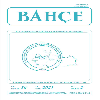Bazı Amerikan asma anaçlarının tuz stresine toleranslarının belirlenmesi
Determining the tolerances to salinity stress of some American grapevine rootstocks
___
- 1. Anonim, 1999. Tarım İl Müdürlüğü İstatistikleri. Tarım ve Köyişleri Bakanlığı, Tarım İl Müdürlüğü, Çanakkale.
- 2. Anonymous, 2003. Agricultural Primary Crops Production Databases, www.apps. fao.org.
- 3. Chandler, S. F., B. B. Mandal, and T. A. Thorphe, 1986. Effect of Sodium Sulfate on Titsue Cultures of Brassica napus cv. Westar and Brassica campestris L. Cv. Tobin. J. Plant Physiol, 126 (1) p: 105-117.
- 4. Desmukh, M. R., S. P. Karkampar, S. G. Patil, 2003. Screening of Grape Rootstocks For Their Salinity Tolerance. Journal of Maharashtra Agricultural Universities, 28:2 p: 122-124.
- 5. Edreva, A., 1998. Responses of Plants to Stress Factors. Bitkilerde Stres Fizyolojisinin Moleküler Temelleri. 22-26 Haziran 1998. Ebiltem, s 1-33, İzmir.
- 6. Fan, X. C, Liu, C. H., Pan, X., Guo, J. N. and Li, M., 2004. Evaluation of Salt Tolerance of Grape Rootstocks Under Hydroponic Culture Conditions. Journal of Fruit Science, 21:2 p: 128-131.
- 7. Gerhard, R., Cheng-Yung Cheng und F. Schneider, 1971. Probleme Der Reben-Vevedlung. Heft 8: 9-27.
- 8. Hasegawa, P. M., R. A. Bressan- and A. V. Handa, 1986. Cellular Mechanisms of Salinity Tolerance. Hort. Science, 21 (6) p: 1317-1324.
- 9. Khanduja, S. D., K. N. J. Chaturvedi and V. K. Garg, 1980. Effect of Exchangeable Sodium Percentage on The Growth and Mineral Composition of Thomson Seedless Grapevine. Sci .Hort. 12 (1) p: 47-53.
- 10. Kısmalı, İ., 1978. Yuvarlak Çekirdeksiz Üzüm Çeşidi ve Farklı Amerikan Asma Anaçları ile Yapılan Aşılı-Köklü Asma Fidanı Üretimi Üzerinde Araştırmalar (Doçentlik Tezi). Ege Üniversitesi Ziraat Fakültesi Bahçe Bitkileri Bölümü, Bornova-İzmir.
- 11. LaRosa, P. C, N. K. Singh,, P. M. Hasegawa, R. A. Bressan, 1989. Stable NaCl Tolerance of Tobacco Cells is Associated With Enhanced Accumulation of Osmotion. Plant Physiol, 91 (5): 855-861.
- 12. Levitt, J., 1980. Responses of Plants to Environmental Stresses. Volume II, 2nd ed. Academic Press, New York, 607p.
- 13. Martinez-Barroso, M. C, and C. E. Alvarez, 1997. Toxicity Symptoms and Tolerance of Strawberry to Salinity in The irrigation Water. Scientia Hort., 71:177-188.
- 14. McKersie, B. D., and Y. Y. Leshem, 1994. Stress and Stress Cooping in Cultivated Plants. Kluwer Academic Publishers, The Netherlands. 256 p.
- 15. Salisbury, F. B., and C. W. Ross, 1992. Plant Physiology. 4th ed. Wadsworth Publishing Com. Behnont, California. 682 p.
- 16. Samra, J. S., 1985. Sodicity Tolerance of Grapes With Geference to The Uptake of Nutrients. Indian J. Hort, 42 (1/2) p: 12-17.
- 17. Samra, J. S., 1986. Effect of Soil Sodicity on the Growty of Four Cultivars of Grape. Indian J. Hort. 43 (1/2) p: 60-65.
- 18. Saraswat, K. B., 1973. Studies on the Effect of Time Planting, Sohking in Water and Precallusing on the Rooting Capacity of Grape Vine Cuttings. Prog. Port, 5(1) p: 57-65.
- 19. Schwarz, M., 1985. The Use of Saline Water in Hydroponics. Soilless Culture, 1 (1): 25-34. 20. Schwarz, M., 1995. Soilless Culture Management, Advanced Series in Agricultural Sciences, Vol. 24, 197p.
- 21. Sivritepe, N., 1995. Asmalarda Tuza Dayanıklılık Testleri ve Tuza Dayanımda Etkili Bazı Faktörler Üzerinde Araştırmalar. Uludağ Üniversitesi Fen Bilimleri Enstitüsü, Bahçe Bitkileri Anabilim Dalı (Dok¬tora Tezi), Bursa, 176 S.
- 22. Sivritepe, N., ve A. Eriş, 1998. Bazı Asma Anaçlarında NaCl Uygulamalarının İyon Metabolizması Üzerine Etkileri. Bahçe Dergisi. TC Tarım ve Köyişleri Bakanlığı Yalova Bahçe Kültürleri Merkez Araştırma Enstitüsü. 27(1-2): 23-33, Yalova.
- 23. Southey, J. M., and J. H. Jooste, 1991, The Effect of Grapevine Rootstock on Performance of Vitis vinifera L. (ev. Colombard) on A Relatively Saline Soil. South African Journal of Enology and Viticulture, 12 (1): 32-41.
- 24. Southey, J. M., and J. H. Jooste, 1992, Physiological Response of Vitis vinifera L. (cv. Chenin blanc) Grafted Onto Different Rootstocks on A Relatively Saline Soil. South African Journal of Enology and Viticulture, 13 (1): 10-22.
- 25. Sönmez, B., 1990. Tuzlu ve Sodyumlu Top- raklar. TC Tarım Orman ve Köyişleri Bakanlığı Köy Hizmetleri Şanlıurfa Araştırma Enstitüsü Müdürlüğü Yayınları, 62, 60s.
- 26. Walker, R. R., 1994. Grapevine Responses to Salinity Bulletin-de-I'OIV., 67:761-762, 634-661.
- 27. Walker, R. R., D. H. Blackmore, P. R. Clingelleffer, P. Godden, L. Francis, P. Vallente and E. Robinson, 2003. Salinity Effects on Vines and Wines. Bulletin-de-I'OIV., 76:865-866, p: 200-227.
- ISSN: 1300-8943
- Yayın Aralığı: Yılda 2 Sayı
- Başlangıç: 1968
- Yayıncı: Atatürk Bahçe Kültürleri Merkez Araştırma Enstitüsü
Bazı Amerikan asma anaçlarının tuz stresine toleranslarının belirlenmesi
Ece TURHAN, Alper DARDENİZ, Nuray Mücella MÜFTÜOĞLU
Ali Osman ŞAHİN, Alper DARDENİZ
Halime ÜNLÜ, Adem KARATAŞ, Hayri ERDOĞAN
Doğu Akdeniz Bölgesinde yabani ve kültür formunda yetişen keçiboynuzu tiplerinin seleksiyonu
Nafiye ADAK, Sinan ETİ, Beyza BİNER, Naci ONUS, Hamide GÜBRÜK, Mustafa ERKAN, Mustafa PEKMEZCİ, Işılay KARAŞAHİN
Tarımsal üretimde çiftçi davranışları: Çiftçiliği uygulama ölçeği (FIS)
Handan AKÇAGÖZ, Hatice KIZILAY, Burhan ÖZKAN
Hayward kivi çeşidinde farklı kalem aşılarının aşı başarısı üzerine etkileri
Hamdi ZENGİNBAL, Muharrem ÖZCAN, Hüseyin ÇELİK
Deniz yosunu özü uygulamalarının tuzlu koşullarda pırasada tohum çimlenmesi üzerine etkisi
Domateste boğma uygulamasının verim ve kalite özelliklerine etkisi
Halime ÜNLÜ, Yasin TİRYAKİOĞLU, Hüseyin PADEM
Farklı anaçlar üzerine aşılanan İzabella (Vitis labrusca L.) üzüm tipinde aşı başarısının saptanması
